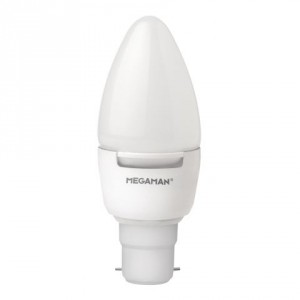As readers of my previous blog posts may know, I’m all for being energy efficient – primarily because of the savings that come with using less energy more than anything else! We’ve got a ground source heat pump as our sole source of heating and hot water, accompanied by a 4kW solar PV array; the newer barn conversion part of our house uses modern insulating materials and has underfloor heating throughout; and the loft space in the original slate roof barn conversion part of the house has been beefed up to 300mm of Knauf Earthwool insulation.
Although we’ve improved energy efficiency and made considerable savings by doing all of the above (we now use around 30% less electricity compared with previous years) one area that was still a large drain on electricity was lighting. Most of the lighting in our house still uses either classic incandescent bulbs or the newer slightly more efficient eco halogen bulbs. We do have some LED lighting, for example in the architectural spot lights illuminating the timber frame roof in the thatched barn conversion, garden patio lighting and kitchen under-shelf lighting. I also recently replaced the two 100W globe bulbs in the large Original BTC Titan metal pendant lights in the kitchen with Megaman 18W globe bulbs which will add to the overall savings. However, the bulk of the lighting is still old technology.
Most of the remaining lights in the house are exposed metal dimmable wall lights with visible shadeless 60W candle bulbs. The fact that they are dimmable 60W candle bulbs has meant that I have struggled to find suitable LED replacements… until now.
Enter Megaman…
 Having been impressed with the Megaman LED bulbs bought so far and also by their good reputation, I decided to try a couple of their 7W dimmable warm white 400 lumen candle bulbs (model number LC0607dv2-B22-2800K). Even though these are marketed as equivalent to 35W non LED bulbs I was pleasantly surprised to find that they were nearer to the existing 60W bulbs than I had expected at full brightness.
Having been impressed with the Megaman LED bulbs bought so far and also by their good reputation, I decided to try a couple of their 7W dimmable warm white 400 lumen candle bulbs (model number LC0607dv2-B22-2800K). Even though these are marketed as equivalent to 35W non LED bulbs I was pleasantly surprised to find that they were nearer to the existing 60W bulbs than I had expected at full brightness.
Older style leading-edge dimmer switches don’t work well with LED bulbs so after a bit of research I decided to upgrade our existing switches with Varlight V-Pro replacements. These are recognised as being quality dimmers and are even recommended by Megaman themselves. The switches are also configurable so you can switch between 2 or 3 different trailing-edge / leading-edge modes and can also set the minimum and maximum brightness levels – clever stuff!
After trialling these bulbs and dimmer switches in one location I was happy enough with the results to bite the bullet and upgrade two rooms – a total of 10 bulbs and 2 dimmers, at a cost of around £170.
The results
So, let’s look at some electricity usage and cost savings as a result of this upgrade.
Taking one of the upgraded rooms which has 6 bulbs, and assuming that the lights are on for an average of 5 hours a day, 365 days a year and our electricity charge is 12p/kWh:
Using 60W incandescent bulbs we would use 365 x 5 x 6 x 0.06 kWh of electricity = 657 kWh = £78.84 per year
Using 7W LED bulbs we would use 365 x 5 x 6 x 0.007 kWh of electricity = 77 kWh = £9.24 per year
So, in just one room we can making a saving of over £69 a year!
It might not sound a lot, but when you apply the same upgrade to further rooms the savings start adding up. And it’s also worth bearing in mind that the life of quality LED bulbs should far exceed that of incandescent or eco halogen bulbs.